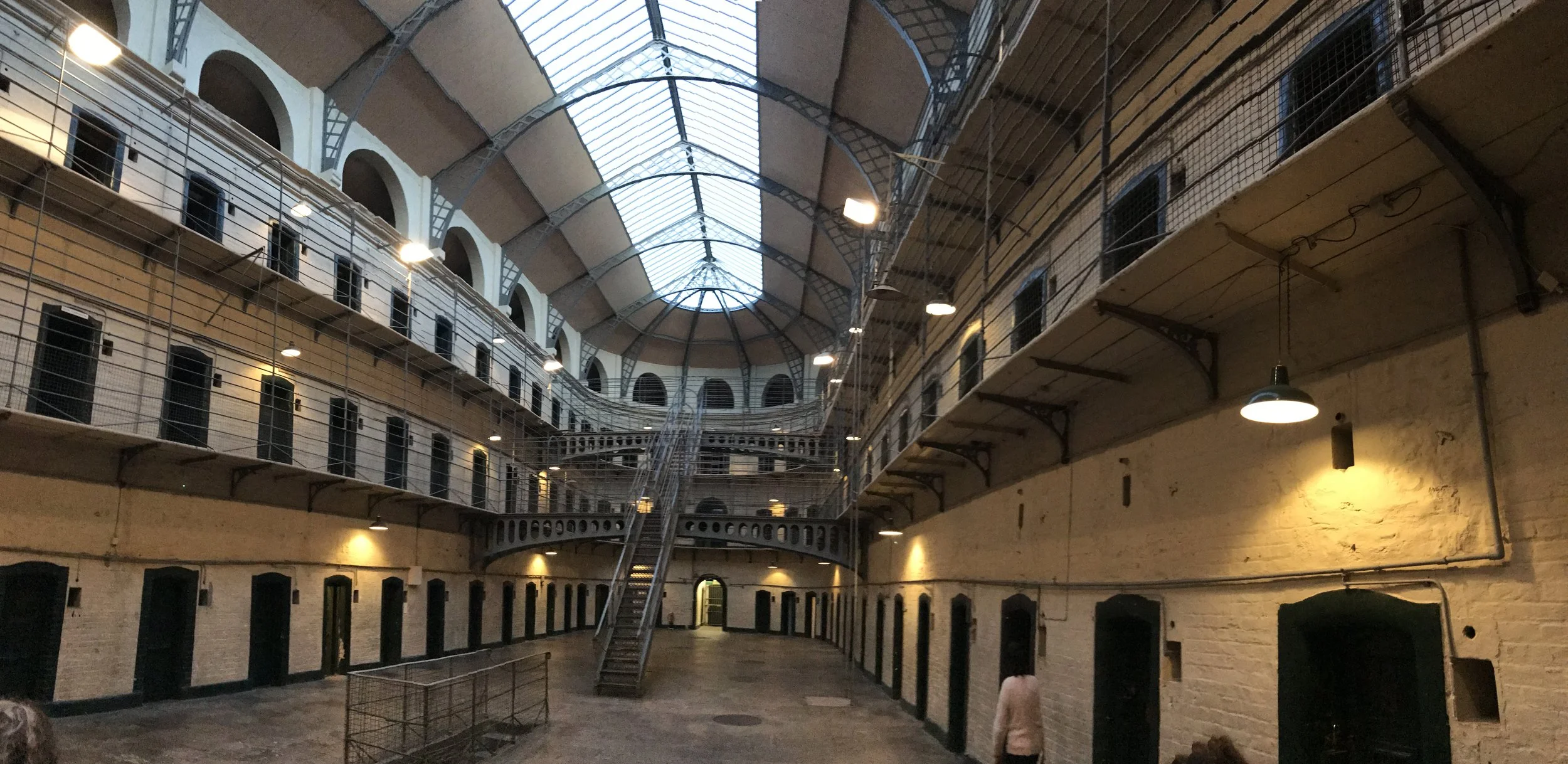Kilmainham Gaol is the largest unoccupied prison in Europe, and is now a museum that covers the seminal moments in Irish history.
While much of Dublin, and Ireland is full of light and music, there are darker places that represent the formation and history of Ireland as a whole. First among those is the Kilmainham Gaol, the central jail for Dublin from 1796 through 1924. While it was a jail, Kilmainham was also more than that - it was a central courthouse - and a site that is also linked to the Irish independence movement. From 1798 through 1916, the leaders of the various rebellions against British rule were imprisoned in Kilmainham Gaol, and in many cases, were executed within the walls of the jail. In addition to the many revolutionaries that were held in Kilmainham, the jail held many thousands of inmates throughout the years, including one as young as seven. While it was a seat of power, repression, and inequality for many years, Kilmainham eventually turned into a location that served as a rallying point for the Irish independence movement after fourteen members of the Easter Rising, including the wounded James Connolly were executed by firing squad in 1916. Today, Kilmainham is the largest abandoned jail in all of Europe, and is one of the most popular museums in all of Dublin.
The Gaol complex includes the old Courthouse for Dublin, which in itself has many interesting stories.
Directions/Fees. The jail is located at Inchicore Rd, Kilmainham, Dublin 8, D08 RK28, Ireland. While there is street parking available, visitors to the area may want to consider taking public transportation or consider walking to the location, as such parking is very limited. Every visitor to Kilmainham should be aware that access to the jail itself is by tour - and tour alone. Further, as the museum is one of the most popular museums in Dublin, tours regularly sell out year-round. Correspondingly, I would strongly advise those who would wish to visit more than just the old Courthouse to purchase tickets in advance of their visit, which are readily available online. As of 2017, it is nine euros for adults to purchase walk-up tickets, which covers the tour and the museum, and five euros for children. For those who purchase tickets in advance online, there is a slight discount in pricing, ranging from eight euros for adults, and four euros for children. While it may seem strange that a jail is one of Dublin’s top attractions, visitors must remember that the location is historically significant to locals as well as tourists, and plan ahead if they wish to see the entirety of the prison.
This surreal ward in Kilmainham Gaol is the most photographed and unique architectural location in the entire facility.
Kilmainham Museum/Kilmainham Gaol Tour. Irrespective of whether one is a walk-up visitor who has happened to acquire a tour time, or a visitor with a pre-set advance time, one will want to allow at least an hour to explore the old Courthouse (which is now the entrance to the museum and Gaol) and the museum. These areas, and the Gaol as a whole are now operated by the Office of Public Works, who have turned an abandoned structure into a first-rate educational experience. By exploring both the Courthouse, and the museum, visitors will be able to understand - and better appreciate the information provided on the tour. If museums aren’t one’s cup of tea, the tour provided by the OPW fills in all the gaps. From the museum gateway, knowledgeable guides lead small groups of 15-20 people through the gaol as a whole, focusing on the deprivations that prisoners experienced in the nineteenth century at Kilmainham, before covering the important role that the prison ended up having at the end of the Easter Rising. All of the tours end at the courtyard where the leaders of the rebellion were shot, and at that point, visitors have the option of either returning to the museum, or heading on to other attractions in Dublin.
Kilmainham Gaol
Tips. If you have a limited amount of time in Dublin, and want to visit one location that affected modern Irish history, Kilmainham is the spot to visit. Even for those not interested in the Irish independence movement, Kilmainham is a fascinating spot to visit for historical facts and stories. While there are many stories about Kilmainham, the two that caught my interest (of many) were the fact that the Courthouse was originally above the jail - so that prisoners below could jeer - and at times, interrupt the proceedings above. Separately, during the nineteenth century, famine conditions were so bad within Ireland at times that people committed minor crimes in order that they would be arrested and interred in Kilmainham in order to be fed. Finally, for those that aren’t interested in history whatsoever, Kilmainham is also fascinating for its architecture, including the dystopian great ward located near the beginning of the tour; and for ghost hunters, given the amount of suffering that occurred over the centuries. For all of these reasons and more Kilmainham, while not a song, dance, or pint, is worth a visit for travelers to Dublin.
The tour ends where the Easter Rising revolutionaries were executed by firing squad.
